| Aerospatiale Tigre | ||
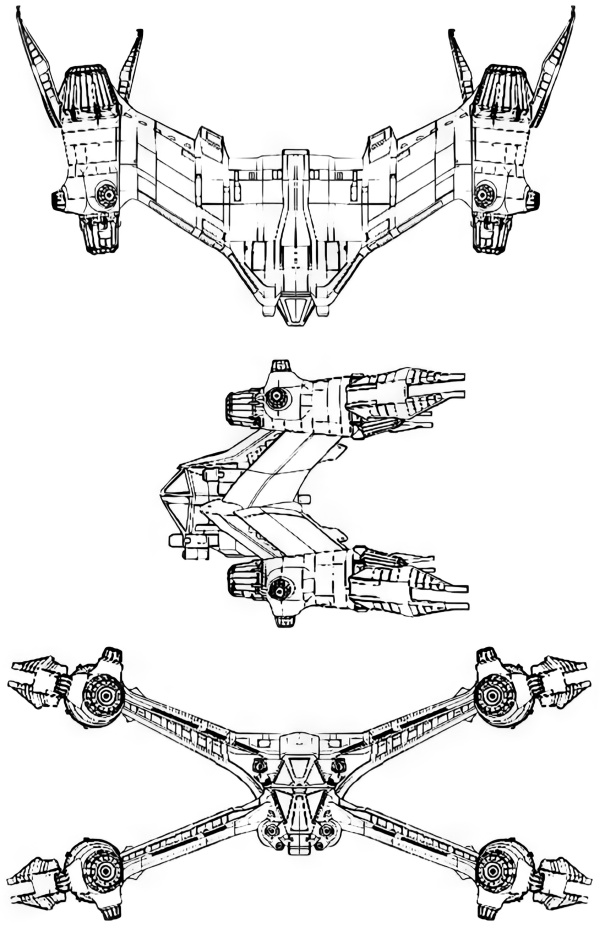 | ||
|
||
| Effect of Euro-Soviet joint project, the Tigre (Tiger) is more technologically advanced than the Gryoza. In a typical Euro way, it has much better sensors and better processing power, although it carries less weapons and is not as sturdy. ESA doctrine calls Tigres operating in pairs, and they are usually launched into orbit as a pair carried by the same Ariane rocket. However (which is a quite unique capability) Tigres may choose to release themselves from the carrying rocket at any moment and enter the orbit on their own, which is intended as a measure for countering enemy counter-missile attacks. Armament usually consists of 2 defensive, one projectile, 4 missiles. | ||
| Aerospatiale Tigre 120 2 0 chemical 8 batteries, fuel cell 65% 3 2m3 2 7 1 5 2 none |
| Aerospatiale VA-22 | ||
 | ||
|
||
| One of the older, less sturdy OTV models, the VA-22 (aka "le Metro" or the subway) is still quite popular, especially when it comes to moving personnel over longer distances. While slightly outdated, this craft has proportionally spacious living quarters, arranged with the comfort only the French are able to achieve. Not that they are outright luxurious, but Metros were projected in the time predating modern "single open space" conception, and thus are heavily divided into small, but comfortable living spaces, and a lot of effort was put into keeping crew and passangers comfortable on longer voyages. | ||
| Aerospatiale VA-22 45 4 16 chemical 10 batteries, fuel cell, solar arrays 45% 2 2 x 10m3 1 1 1 5 3 none |
| Aerospatiale VM-2 | ||
 | ||
|
||
| The VM-2 (aka "Bubble") is the standard work module in ESA stations. Whereas not very sturdy, it does well in it's usual assignment, and is pretty comfortable - thus allowing for prolonged shifts without loosing concentration. | ||
| Aerospatiale VM-2 4 1 0 chemical 2 batteries, solar arrays 30% 1 4m3 1 0 1 3 1 none |
| Antonov Mir 15 | ||
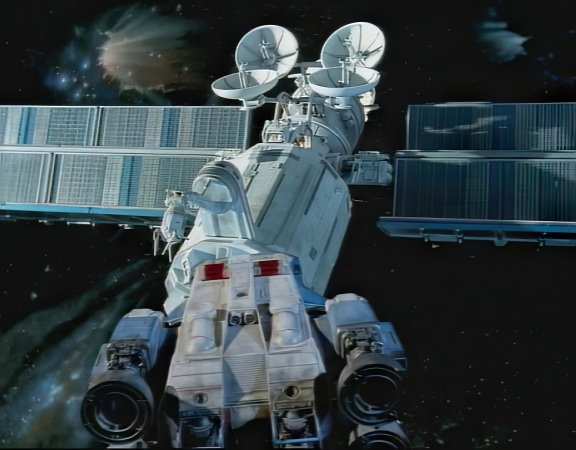 | ||
|
||
| An old and outdated workshack design, the Mir ("World") has been long since bested by M&K products. Nowadays, even Russians prefer M&K. It's based on 20th century Russian concepts of a space laboratory and scientific station, just stripped from whatever wasn't necessary in everyday life. However, a number of second-handed Mirs are available as cheap, no-frills living quarters. | ||
| Antonov Mir 15 2 1 15 none N/A batteries, solar arrays 25% 1 10m3 0 0 1 6 0 none |
| Antonov Shkhval | ||
 | ||
|
||
| One of the first clippers, Shkhval ("Sea storm") from Russian Antonov Construction Bureau is a robust, fast craft with decent cargo capacity for it's class. However, this is the end of it's advantages, as crew quarters are tight, cramped, and definitely projected by someone who never heard about ergonomy. Armament is usually not installed. | ||
| Antonov Shkhval 80 2 2 chemical, nuclear 8, 12 batteries, fuel cell, nuclear 55% 2 70m3 2 1 1 6 2 1 OTV |
| Bae Orca | ||
 | ||
|
||
| Orca is merely a flitter able to operate from Earth. It has an aerodyne body, and tiny passenger and cargo compartmets. What's interesting, is the amount of weaponary this otherwise nondescript shuttle can carry. | ||
| Bae Orca 80 2 2 chemical 5 batteries, fuel cell 55% 2 4m3 2 4 1 5 2 none |
| Bae Pilum | ||
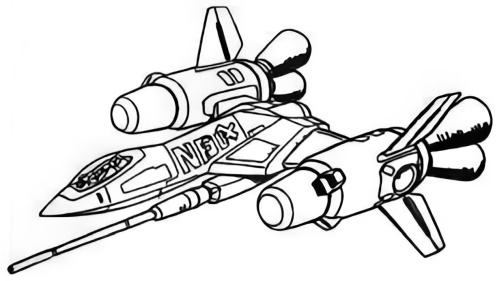 | ||
|
||
| A modern minifighter from British Aerospace, Pilum is an as-is craft - it doesn't carry much stuff, just a single railgun, but it serves well as a patrol craft, and thus is a welcomed "poor man's delta" for smaller organisations. | ||
| Bae Pilum 15 1 0 chemical 4 batteries, fuel cell 55% 2 0m3 1 1 0 4 2 none |
| Bae Ray | ||
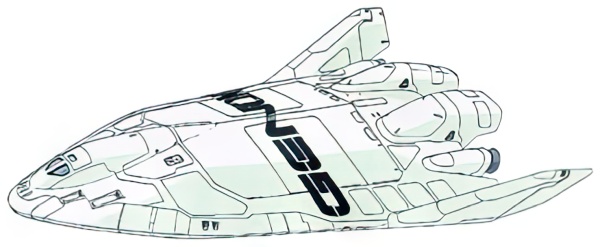 | ||
|
||
| Another aerodyne-bodied shuttlecraft from Bae, Ray is Orca's big brother that seems to be obviously geared for combat. It can take as much weapons as the big shuttles, and there are rumours of Rays having their cargo bay turned into missile bay. | ||
| Bae Ray 120 2 4 chemical 5 batteries, fuel cell 50% 2 50m3 2 6 2 6 3 none |
| Boeing Jumbo | ||
 | ||
|
||
| The fate of American Express went unnoticed by American corps. Boeing made an attempt to top Rockwell by creating an even bigger spaceplane. The Jumbo does fly well, but it isn't economical... so only one was ever built. Boeing claims they are able to deliver another one in 6 months from the date of ordering, but nobody is interested. | ||
| Boeing Jumbo 2900 9 150 chemical 7 batteries, fuel cell 50% 3 70m3 3 4 1 11 4 none |
| Boeing Raptor | ||
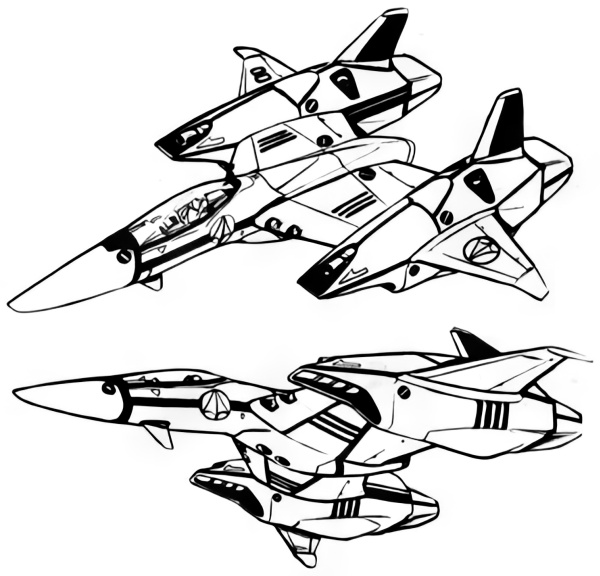 | ||
|
||
| Raptor was one of the original low-orbital attack fighters, built for USAF. It is a clumsy jet, but it's able of reaching high-atmosphere under conventional drive (thus it uses only 2 of its burns to leave Earth), then reaching the low orbit to attack its prey with its ASAT missiles. It wasn't wildly effective, and now is discontinued in favour of delta craft. Surplus Raptors are being sold on the open market, and some have been transported into orbit. The idea however hasn't vanished, and nowadays is continued in the form of minifighters. While few are produced anymore, used models go for dirt cheap, around 2-3 mil eb usually. Armament usually consists of missiles. | ||
| Boeing Raptor 30 1 0 chemical 5 batteries 30% 1 0m3 1 2 0 2 1 none |
| Boeing Raptor II | ||
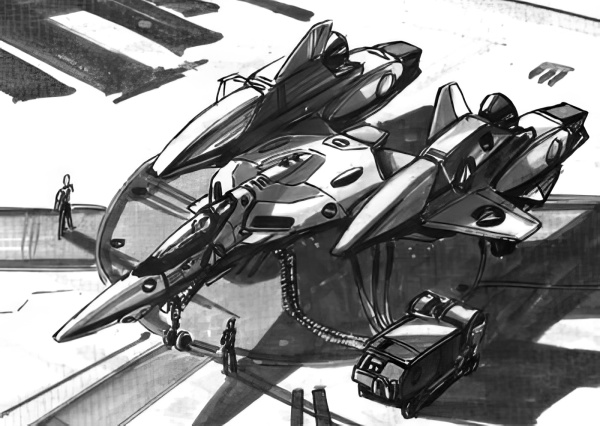 | ||
|
||
| The upgraded and modified variant of the original Raptor, Raptor II is sturdier, better armed and has superior electronics. However, it had a short career, quickly replaced by true deltas. Only a few were produced and while no new Raptor II's are produced, used ones are pretty cheap, like 3-4 million eb. Armament usually consists of 2 missiles and an early kinetic gun. | ||
| Boeing Raptor II 37 1 0 chemical 5 batteries 35% 1 0m3 1 3 0 2 2 none |
| Boeing-NASA Atlantis | ||
 | ||
|
||
| A nondescript space shuttle from Boeing, it sacrifices combat capabilities for passenger spaces. All in all, this makes it a pretty universal vehicle, well-selling on the private market. | ||
| Boeing-NASA Atlantis 100 2 6 chemical 5 batteries 50% 2 50m3 2 2 1 7 3 none |
| Dornier Sternjager | ||
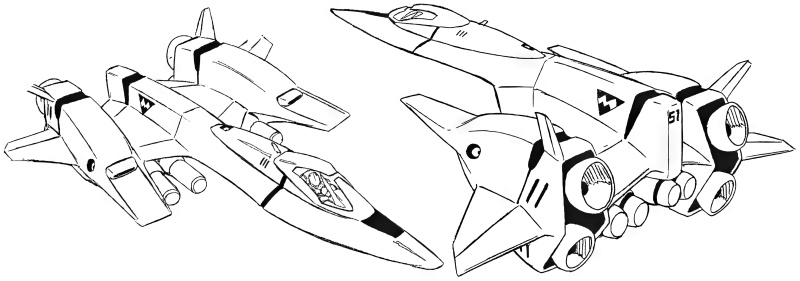 | ||
|
||
| European equivalent to Raptor and Striela, Sternjager ("Starfighter") is quite heavily armed for it's size - and odd move, considering typical Eurpean tendency to go rather sensor-heavy than gun-heavy. It was produced in very limited numbers and sells used for 3-4 million eb. Armament usually consists of missiles. | ||
| Dornier Sternjager 35 1 0 chemical 5 batteries 30% 1 0m3 1 4 0 2 1 none |
| ESA Albatros | ||
 | ||
|
||
| The Albatros is an odd hybrid - a spaceplane, carrying a space shuttle piggy-back. ESA means these to work as lift-off platforms for shuttles, allowing a shuttle to be carried into LEO with full fuel tanks. USAF speculates that ESA intends this as a method of quick deployment of troops shuttles into orbit. | ||
| ESA Albatros 450 5 6 chemical 7 batteries, fuel cell 50% 3 0m3 1 4 1 9 3 1 shuttle |
| ESA Haven | ||
 | ||
|
||
| One of the more common small colonies, Haven has twin gravity wheels, allowing for pretty normal life. A number of these do serve as private villas for those rich enough. 1 computer in backup. | ||
| ESA Haven 500 25 400 none N/A batteries, solar arrays 40% 4 800m3 0 0 2 30 0 none |
| ESA Sentry Defence Satellite | ||
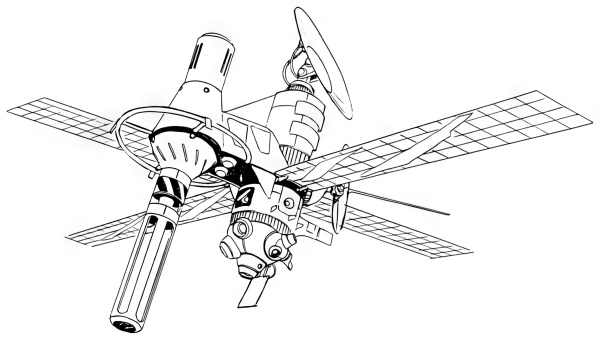 | ||
|
||
| Your standard issue combat platform, Sentry is a typical example of it's class, and pretty cheap as well. Too bad ESA doesn't sell these to everybody willing. But once you get several Sentries, you may form a defensive perimeter around your asylum, and be pretty sure you won't be disturbed. Armament consists of 1 laser, 16 missiles. 2 x 2 computers in backup. | ||
| ESA Sentry Defence Satellite 50 0 0 none N/A batteries, solar arrays 70% 4 20m3 0 17 4 5 0 none |
| Grumman Shadow | ||
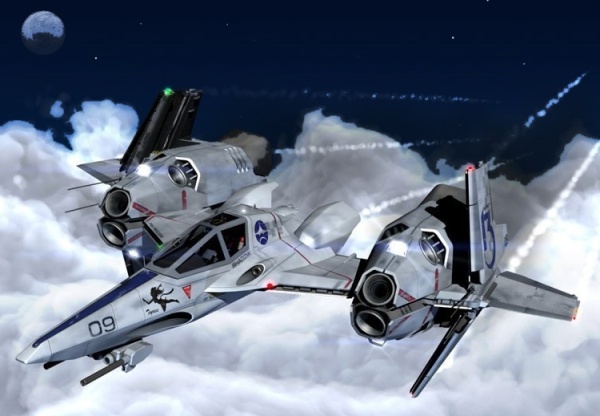 | ||
|
||
| Shadow (and it's competitior, Spectre) are USAF's projects for creating space superiority. These craft resemble deltas, but they are not meant to operate from Earth. However, they are streamlined, so they can handle limited atmosphere, like upper levels of Earth's and Mars' atmospheres. They will operate from carrier craft, asteroid bases (like the Kirkwood station), and - in a pinch - from Luna. Armament usually consists of one defensive, one kinetic - the turret under the nose - and six missiles. | ||
| Grumman Shadow 100 2 0 chemical 10 batteries, fuel cell 60% 2 1m3 2 8 2 7 4 none |
| IEC Colt | ||
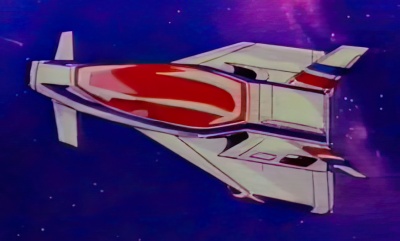 | ||
|
||
| One of the early "minifighters", Colt was an attempt to create a cheap spacefighter. It carries quite a punch for it's size, packing two ASAT missiles. However, it's fuel reserves makes it even less practical than a delta - Colt has to be launched from a space installation or carrier craft, as it cannot start from most space bodies on it's own. Armament usually consists of a kinetic weapon and 2 missiles. | ||
| IEC Colt 20 1 0 chemical 4 batteries 50% 2 0m3 1 3 0 3 2 none |
| IEC Mammoth | ||
 | ||
|
||
| IEC Mammoth is the biggest planetary lander available. It was projected to shuttle large amounts of cargo and personnel form orbit to surface of Mars, but - until there's a need for it - it's used at Luna. Although Mammoth is a very cost-effective mean of moving bulk cargo, it is rarely needed. Armament is usually a defensive and missiles mix. | ||
| IEC Mammoth 100 2 15 chemical 6 batteries, fuel cell 50% 2 200m3 1 6 3 8 3 none |
| IEC OTV | ||
 | ||
|
||
| The OTV (aka the "Brick" named after it's slab-like appearance) was the first OTV produced. Nowadays, it's long outclassed by newer, shinier, and more effective models - but still can be encountered sometimes, usually as a corporate executives private vehicle, or in the hands of a smaller spacer work crew. Armament is usually not installed. | ||
| IEC OTV 30 4 3 chemical 7 batteries, fuel cell, solar arrays 30% 1 2 x 10m3 1 1 2 7 3 none |
| JAB L-4 | ||
 | ||
|
||
| The L-4 (aka "Rabbit") is a Mitsubishi shuttle OTV popular with corporate foremen and spacer families who can afford it. Slightly outdated, however it handles well, and can carry a fair amount of people and equipment. | ||
| JAB L-4 35 3 10 chemical 8 batteries, fuel cell 50% 2 20m3 1 0 1 5 3 none |
| JAB L-6 | ||
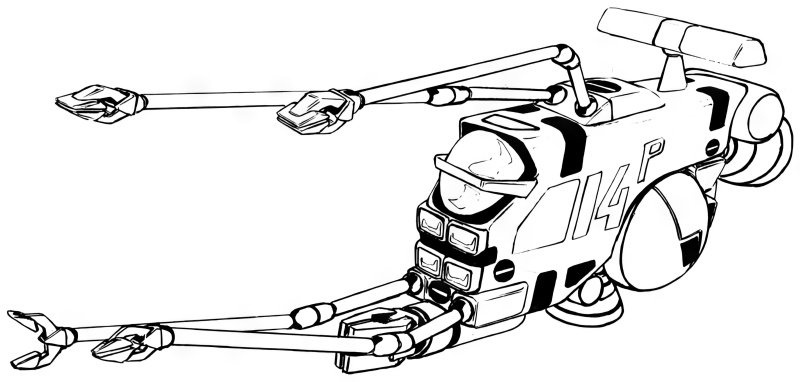 | ||
|
||
| One of the more common OTVs, the L-6 (aka "Lobster") is often criticized for it's fragile construction. However, it's still a very useful vehicle, and it's manipulator arms are quite precise. If you don't press it into duty under fire, you can trust the Lobster to get the work done. | ||
| JAB L-6 70 2 1 chemical 10 batteries, fuel cell, solar arrays 50% 2 20m3 2 0 2 6 4 none |
| Koroliev K-16 | ||
 | ||
|
||
| Another Russian product, and - as usual - it's big, box-like and ugly, hence the nickname "Piglet". And you can rely on it. This slightly outdated OTV is a great cargo hauler, and is rather tough for it's class. Armament is usually not installed. | ||
| Koroliev K-16 90 2 2 chemical 10 batteries, fuel cell 45% 2 8 x 25m3 1 2 3 7 4 none |
| KosmoSov Buran II | ||
 | ||
|
||
| Can the Yanks have yet another Space Shuttle ? If so, Russians can have the next Buran ("Blizzard", it was the name of the original Soviet space shuttle, developed in late 1980s), and it will be bigger, tougher, and it will carry more ! However, the electronics are inferior, and Buran II requires bigger crew. | ||
| KosmoSov Buran II 270 6 8 chemical 9 batteries, fuel cell 50% 3 300m3 2 6 2 15 6 none |
| McDonnell Douglas Cyclop | ||
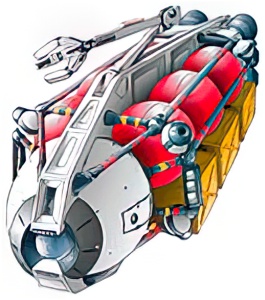 | ||
|
||
| Cyclop is one of the heavy duty vehicles used to haul cargo. Lots of cargo - 360 m3 of containerised cargo on each Cyclops. They're big, not very fast or maneuverable, and usually not used in military applications (even though their cargo capacity would make them useful as replenishment tenders). Armament usually consists of at least one defensive. | ||
| McDonnell Douglas Cyclop 60 2 1 chemical 8 batteries, fuel cell 50% 2 30m3 1 2 0 8 4 none |
| McDonnell Douglas Orient Express II | ||
 | ||
|
||
| The Orient Express II from McDonnell Douglas never left the project desk. Seems MDD had learned from Boeing and Rockwell projects. It became an entry stage for the construction of a new generation of spaceplanes. | ||
| McDonnell Douglas Orient Express II 2300 12 200 chemical 7 batteries, fuel cell 50% 3 100m3 3 2 1 12 5 none |
| MiG Kosmos XII | ||
 | ||
|
||
| Russian combat sat, this station is as Russian as a bottle of Stolichnya with a Red Square postcard glued on. Tough, not very bright, but still quite effective. Kosmos-series battlesats are usually rigged in a very nasty way. To compensate for limited targeting abilities, they tend to discharge as many weapons as possible in salvo after a salvo, hoping for a kill. While primitive, this tactic is quite effective as well, although numerous targets are known to stir confusion in Kosmos' primitive computers. Armament consists of 1 laser, 2 kinetic weapons, 6 missiles, chaff, aerosol. 1 computer in backup. | ||
| MiG Kosmos XII 60 0 0 none N/A batteries, solar arrays 55% 2 20m3 0 11 6 8 0 none |
| MiG Striela | ||
 | ||
|
||
| Russian equivalent to Raptor, Striela ("Arrow") is slightly sturdier, but it's electronics can't stand to any standard. Still, if you want to trash something in space, and you want to do it cheap, a surplus Striela (and Soviets sell them used for about 2 million eb, few questions asked), is the best option. | ||
| MiG Striela 25 1 0 chemical 4 batteries 25% 1 0m3 1 0 0 2 2 none |
| MiG Stschuka | ||
 | ||
|
||
| Stschuka ("Pike") is like it's fish counterpart - fast and deadly. This tough small shuttle simply darts into orbit by sheer power of it's rocket engines, and requires minimum maintenance. Russians use them for emergency operations in space - whether these are rescue operations, fast deployment of EVA troops, or simply an urgent delivery. | ||
| MiG Stschuka 130 3 8 chemical 6 batteries, fuel cell 45% 2 50m3 2 3 2 8 4 none |
| Mitsubishi Kogai | ||
 | ||
|
||
| This otherwise nondescript Japanese delta outclasses it's competitiors when it comes down to electronics. Sensor package is superior to any Euro or American model, and the computers onboard allow the single pilot to control Kogai better than any two-man crew on competitor ships. Armament usually consists of one defensive, one laser, one kinetic and 4 missiles. | ||
| Mitsubishi Kogai 110 3 10 chemical 7 batteries, fuel cell 80% 3 4m3 3 7 1 5 2 none |
| Mitsubishi-Koryidansu A-6 | ||
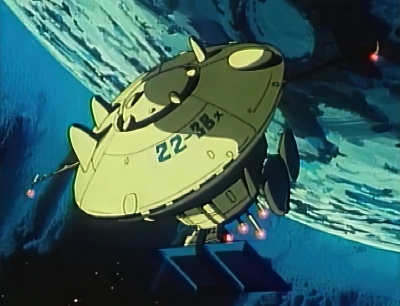 | ||
|
||
| Your basic, no-frills workshack. One of the early M&K designs, it can be incorporated into their modular habitats, but it was designed as a stand-alone habitat. It's tight, cheap, and uncomfortable, but it's one of the most affordable orbital homes nowadays. | ||
| Mitsubishi-Koryidansu A-6 5 10 0 none N/A batteries, solar arrays 30% 1 10m3 0 0 1 6 0 none |
| Mitsubishi-Koryidansu H-6 Modular Colony | ||
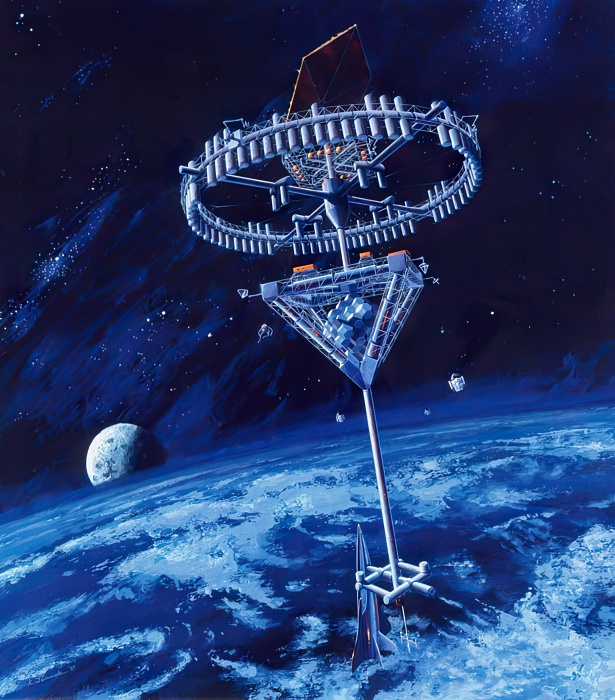 | ||
|
||
| The H-6 (aka "Anthill") has an interesting feature : it's gravity ring can be expanded by linking modules to it. These are standard M&K habitat modules, and there is a full choice of available ones - the most commn are living, warehouse, workshop, laboratory and greenhouse modules. Apart from that, the Anthill offers a decent docking infrastructure. No armament in standard but usually ECM pack and up to 3 lasers are installed. 1 computer in backup. | ||
| Mitsubishi-Koryidansu H-6 Modular Colony 150 15 50 none N/A batteries, solar arrays 40% 4 100m3 0 0 2 20 0 none |
| Mitsubishi-Koryidansu Uigitsu-class | ||
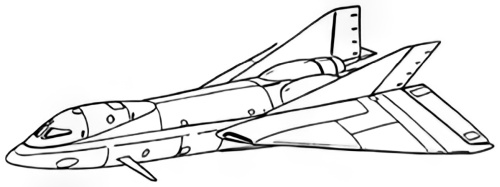 | ||
|
||
| Budget space shuttle, anyone ? Uigitsu make most of the private shuttle fleets, and they are popular among smaller corporations as well. For small - time transport, or if you just need to be able to reach your orbital facilities on your own, and time day and night, they're perfect, and equivalent of a business jet in the space age. Uigitsu are said to be employed by criminal syndicates as well (just what do you think - how the drugs make their way off-planet ?). | ||
| Mitsubishi-Koryidansu Uigitsu-class 70 2 4 chemical 6 batteries, fuel cell 50% 2 20m3 2 2 1 6 3 none |
| NASA Discovery-class | ||
 | ||
|
||
| Your standard-issue explorer ship, Discovery is a modern spaceship - NASA offers them to any nation or corporation who feels they need one. Armament is usually not installed. | ||
| NASA Discovery-class 1500 6 62 chemical, nuclear 8, 12 fuel cell, nuclear, solar arrays 90% 5 150m3 3 2 0 15 6 5 crafts |
| NASA Friendship-class | ||
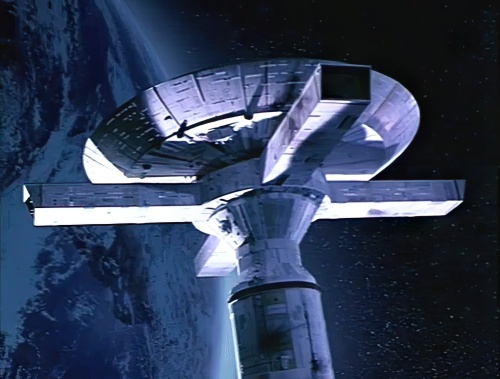 | ||
|
||
| Friendship is bigger than O'Neill-type colonies, but also much more crowded. Only the dish visible at the end of the station is rotating, and it provides living space for Friendship's inhabitants. The rest of the station, including four docking arms just below the gravity dish, are immobile and subject to null-gravity. In fact, all workplaces that don't require gravity to function are kept in the gravity free zone, thus they are pretty far from living quarters. The living quarters are crowding in the dish. Whereas this method is practical, it's far from comfortable. No armament in standard, but almost any existing one has some weaponry installed. 2 computers in backup. | ||
| NASA Friendship-class 5000 200 30000 none N/A batteries, solar arrays 45% 4 2000m3 0 0 4 30 0 none |
| NASA Reagan-class | ||
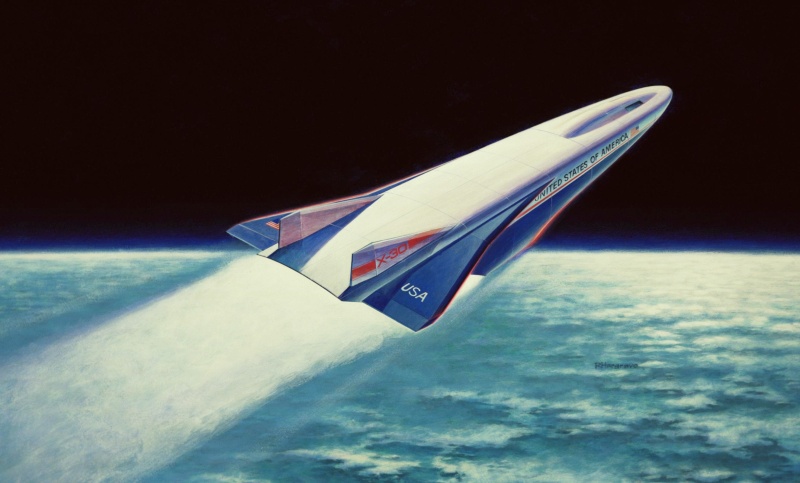 | ||
|
||
| Successor to the Orient Express series, Reagan is the modern US spaceplane. Not as big as Aries or Hermes, it has a better cargo capacity, and enough teeth to hold it's own. NASA uses them to ferry personnel and supplies to it's orbital installations. Armament usually consists of 2 defensive and 2 missiles. | ||
| NASA Reagan-class 300 2 22 chemical 8 batteries, fuel cell 50% 1 55m3 1 4 0 7 3 none |
| NASA Space Shuttle III | ||
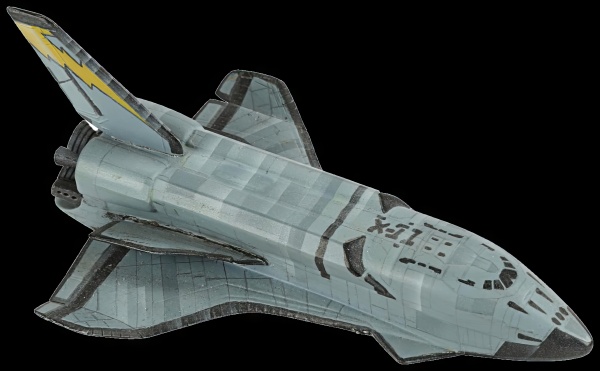 | ||
|
||
| The next generation in the Space Shuttle program, Shuttle III is meant to be a bigger, more cost-effective lifter. These craft are also meant to be able to operate on Mars (although it haven't been tested yet !). And it makes a nice troop carrier for orbital work. | ||
| NASA Space Shuttle III 300 4 8 chemical 9 batteries, fuel cell 50% 3 250m3 2 6 2 14 5 flitter |
| Northrop Spectre | ||
 | ||
|
||
| Main competitior to Shadow, Spectre is a bit more fragile, but also lighter and equipped with superior electronics. Armament usually consists of one defensive, one kinetic, two missiles. | ||
| Northrop Spectre 90 2 0 chemical 10 batteries, fuel cell 70% 2 1m3 2 8 1 6 3 none |
| Orbital Air Gull | ||
 | ||
|
||
| Another "business jet" of space age, Gull is a comfortable (or even luxurious, depending on the variant) vehicle, able to start from any adequately long runway and reach the orbit. And it does it without making Mr. Jones' fat ass suffering the multi-G accelerations a space shuttle would cause. Gulls are readily available for sale to anyone willing. | ||
| Orbital Air Gull 80 2 6 chemical 7 batteries, fuel cell 50% 2 8m3 2 0 0 5 2 none |
| Orbital Air Pegasus | ||
 | ||
|
||
| Pegasus is another surface-to-orbit vessel meant for the private sector. It has ferrying capabilities slightly better than JAB TAV-12 (it carries twice that much personnel, although slightly less cargo). Armament usually consists of 2 defensive and 1 kinetic gun. | ||
| Orbital Air Pegasus 240 3 8 chemical 8 batteries, fuel cell 50% 3 20m3 2 3 0 7 3 none |
| Orbital Air Seraphim | ||
 | ||
|
||
| Another nondescript delta, OA's Seraphim is a typical example of it's class nowadays. Here, shown in the last phase of launch, just before jettisoning the external fuel tank it uses to reach the orbit. Armament usually consists of one defensive, one laser, 6 missiles. | ||
| Orbital Air Seraphim 80 2 0 chemical 7 batteries, fuel cell 55% 2 2m3 2 8 1 5 2 none |
| Panavia Orion | ||
 | ||
|
||
| Europeans laughed at the "American Express" project, but they weren't able to construct a spaceplane as impressive. Instead, they've built the Orion, a smaller, lighter "space business jet". Orions find heavy use in corporate sector. | ||
| Panavia Orion 140 3 14 chemical 7 batteries, fuel cell 50% 3 10m3 2 0 0 7 2 none |
| Rockwell American Express | ||
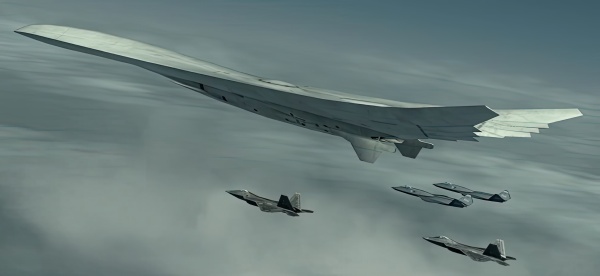 | ||
|
||
| Or "American Excess", as those pesky jealous Euros call it. The first spaceplane in history able to lift a hundred people into orbit ! Lot of passengers equals low ticket costs - economy works in advantage of the Express. However, the ticket is still pretty expensive, and gossip says these craft are unreliable... what causes the Express to have less passengers than it should have to be fully productive ? | ||
| Rockwell American Express 450 7 100 chemical 7 batteries, fuel cell 50% 3 50m3 3 6 1 9 4 none |
| Rockwell Corsair | ||
 | ||
|
||
| Another minifighter, this time meant fot USAF, Corsair is sturdy and modern. It is, however, quite expensive for it's class as well. Armament usually consists of a twin laser in belly turret and a kinetic weapon. | ||
| Rockwell Corsair 20 1 0 chemical 4 batteries, fuel cell 60% 2 0m3 1 2 1 4 2 none |
| Rockwell Lark | ||
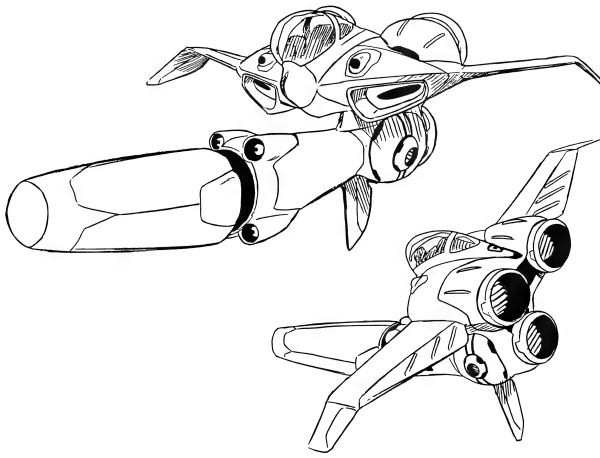 | ||
|
||
| The Lark is an orbital tugboat, used to ferry cargo containers between space stations. It is also used to assist in docking of large craft, for salvage operations, and to collect supply barges launched by massdrivers. There were situations when Larks were equipped with weapons (usually kinetic guns or missiles), but they are not combat ships, and arming them is rather a desperate move. | ||
| Rockwell Lark 3 1 1 chemical 3 batteries, solar arrays 30% 1 2m3 1 1 1 2 1 none |
| Tupolev Tsiolkovski-class | ||
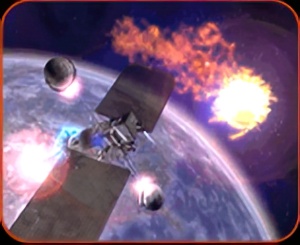 | ||
|
||
| So you want to do some research, da ? Tupolev will provide you with a place for it. They won't ask you what kind of research you want to do, nor - in fact - who you really are. The living quarters are somewhat spartan (what have you expected from a Russian made one ?), and you'd better provide all the less universal equipment you're going to use, but apart of that, Tsiolkovsky is a good idea. No armament in standard, but surprisingly many of these labs are retrofitted with countermeasures, lasers and missile banks. 1 computer in backup. | ||
| Tupolev Tsiolkovski-class 30 12 0 none N/A batteries, solar arrays 20% 3 30m3 0 0 0 12 0 none |
| Tupolev Tu-216 Gryoza | ||
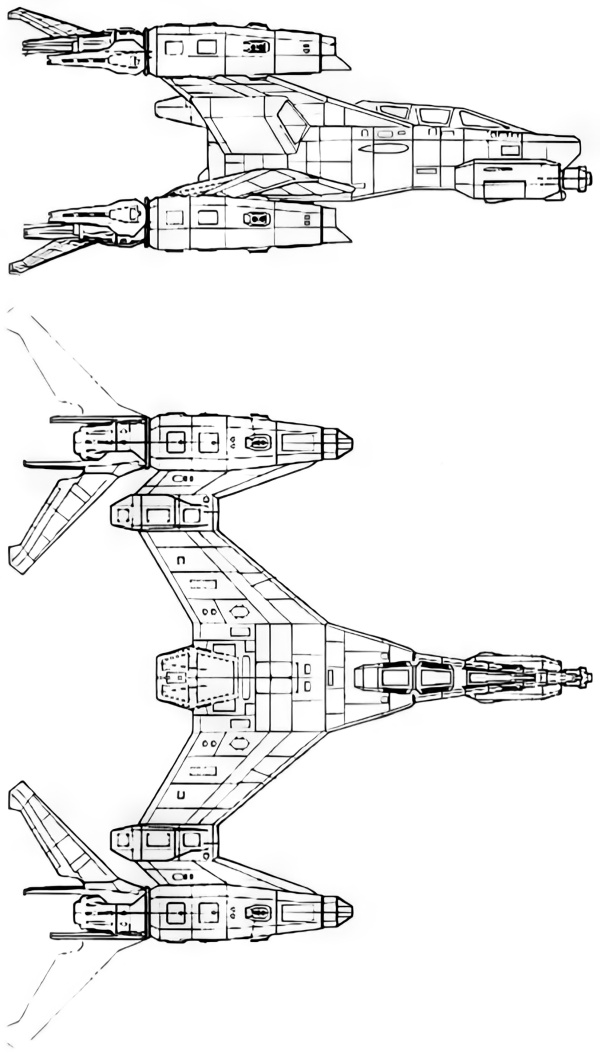 | ||
|
||
| Gryoza ("Terror") is the modern NeoSoviet delta, a sturdy, typically Russian combat spacecraft. While it can start from Earth on it's own, the Tu-216 is usually carried out by a rocket (space shuttle-like). Armament usually consists of a defensive weapon, a kinetic weapon or railgun, and 6 missiles. | ||
| Tupolev Tu-216 Gryoza 100 2 0 chemical 8 batteries, fuel cell 55% 2 3m3 2 8 2 6 2 none |
| USAF Alamo-class | ||
 | ||
|
||
| When USAF goes into something, they want it as big, bad and ugly as possible. The Alamo-class combat platform is no exception. Alamo is one of the most deadly small space installations. Armament consists of 1 particle gun, 2 lasers, 3 banks of 12 missiles each, a full set of countermeasures. 2 x 2 computers in backup. | ||
| USAF Alamo-class 90 8 0 none N/A nuclear 80% 4 20m3 0 7 6 7 0 none |
| USAF Midway-class | ||
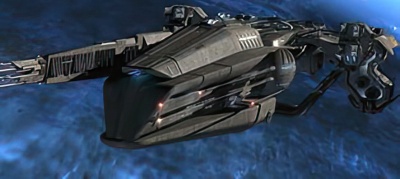 | ||
|
||
| If you want to spend the world's biggest military budget in the space warfare category, ask USAF. They'll be more than happy to spend it twice and yell for more... Midway-class ships are the way USAF found to project it's might in deep space. Midways aren't as heavily armed as the earlier Andromeda-class gunships, but they aren't mere weapons platforms - they do carry a troop of EVATs, or spacetroopers, to any destination the USAF wants to get. Since Midawys can't land on atmosphered planets (like Earth or Mars), it is generally thought that these ships will be used mainly in the Asteroid Belt, at least until suitable orbital dropships get projected. | ||
| USAF Midway-class 5000 12 56 chemical, nuclear 8, 15 batteries, fuel cell, nuclear 80% 4 400m3 6 10 4 26 9 4 delta / OTV (or 8 minifighters) |
| USAF Peacekeeper | ||
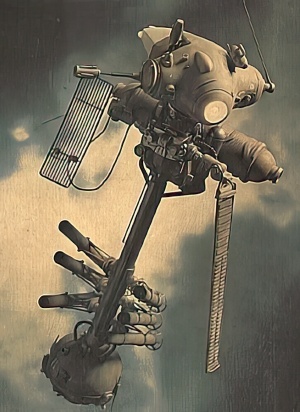 | ||
|
||
| US answer to the Sentry system, Peacekeepers are used as perimeter defenses for many USAF installations in space. Armament consists of 1 laser and 6 missiles. 2 computers in backup. | ||
| USAF Peacekeeper 70 0 0 none N/A batteries, solar arrays 80% 4 10m3 0 7 4 6 0 none |
| USAF Richmond-class | ||
 | ||
|
||
| After the Colorado Springs incident USAF the USAF has been diligently preparing for the first space war. They will not be caught defenseless again. Richmond-class carriers are not as advanced as Midway-class gunships, but they are scary (and damn expensive) ships as well. Due to large amount of storage space, it is theorized Richmond-class carriers can be used as space tankers for combat craft on prolonged operations. Currently only one exists, and it remains in earth orbit always well out of trajectory of the lunar mass driver. | ||
| USAF Richmond-class 23000 8 20 chemical, nuclear 8, 12 batteries, fuel cell, nuclear 50% 3 200m3 4 60 3 17 17 6 delta, 22 minifighters |
| Utopia Mosquito | ||
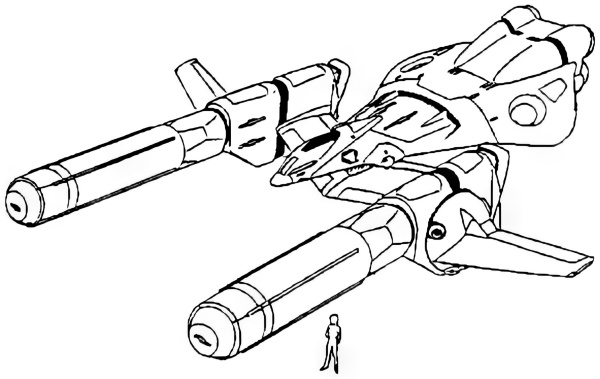 | ||
|
||
| The Mosquito is Utopia's concept of future delta. While it can operate form ground bases (like those on Earth), it's home is in space. Mosquito is an odd hybrid between delta and a tug, but that's what Utopia's concept calls for : universality. Mosquito can carry two 30 m3 tubular containers - either with supplies (allowing it to assume the role of a fleet replenishment tender) or with EVA troops, allowing it to perform boarding actions (the containers can be jettisoned towards the target from a distance). Currently, Utopia is working on container-shaped missile pods, mine dispensers and orbital bombs. Armament usually consists of two defensive, one laser, one kinetic, two missiles. | ||
| Utopia Mosquito 120 1 0 chemical 7 batteries, fuel cell 60% 2 2m3 2 6 1 5 2 none |
| Utopia SkyEye | ||
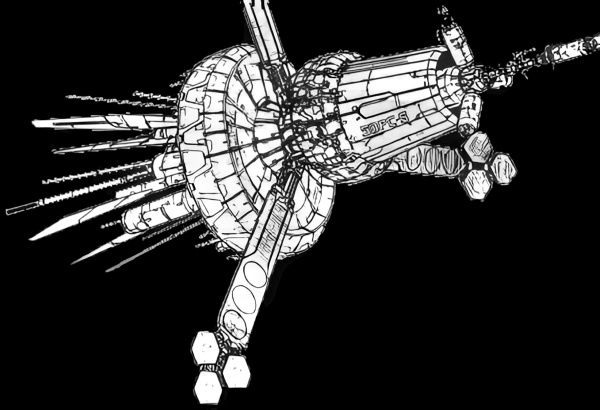 | ||
|
||
| A typical spy sat, SkyEye uses it's advanced senors to pickup enemy communications, and monitor space travel. In a pinch, it can defend itself, but in reality, this is more for show than of any real use - enough to keep occasional looters at bay, but far not enough to keep an enemy delta from taking it out. Armament consists of 6 missiles and ECM. 1 computer in backup. | ||
| Utopia SkyEye 15 0 0 none N/A batteries, solar arrays 80% 3 0m3 0 7 0 5 0 none |
| Utopia Vulture | ||
 | ||
|
||
| A product of the orbital Utopia corporation, Vulture presents yet another approach to the minifighter idea. Small, light, and dirt cheap, it however gets the job done. Armament usually consists of 1 twin laser, counts as single weapon. | ||
| Utopia Vulture 13 1 0 chemical 4 batteries 50% 1 0m3 1 1 0 3 1 none |
